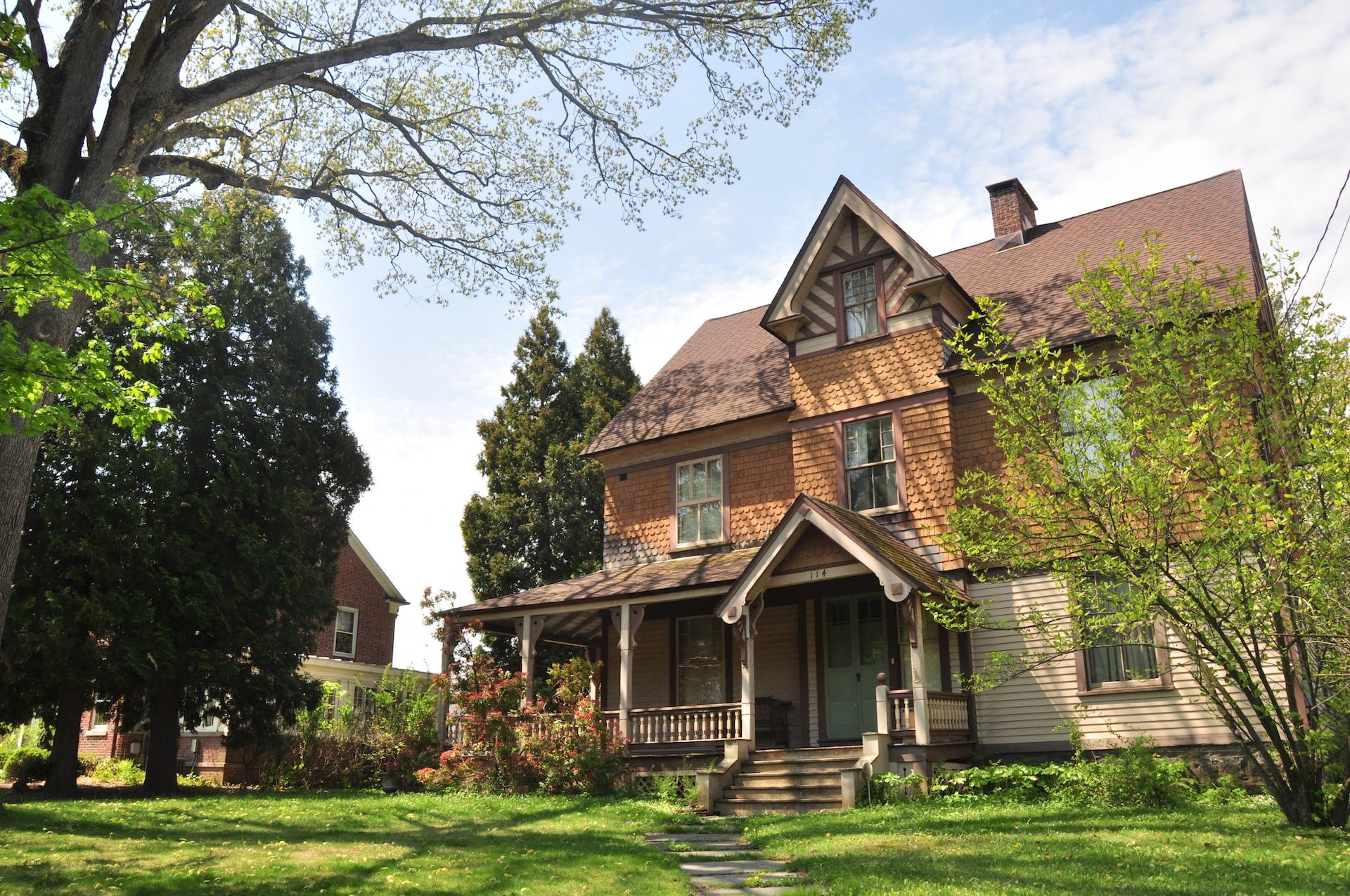
Composite roofing stands as a testament to modern engineering, blending diverse materials like recycled plastics, rubber, asphalt, and more into a single, high-performance roofing solution. With a remarkable ability to replicate the elegance of natural materials such as slate, wood shakes, or classic shingles, composite roofs have become a go-to choice for homeowners seeking both sophistication and practicality.
It’s sort of like dressing yourself up as something different for Halloween, only your roof gets to wear its costume all year round! At RoofCrafters, composite roofing is a fan favorite not only for us but for our beloved clients as well. With recyclability, versatility, and a multitude of aesthetic options, what’s not to love?
So, if you’re interested in composite roofing for your home, but you’re not quite sure where to start, you’ve come to the right place, my friend. In just a few short moments, you’ll learn the definition of composite roofing, the different types, which one is right for you, its environmental impact, and more! Let’s get started.
What Is Composite Roofing?
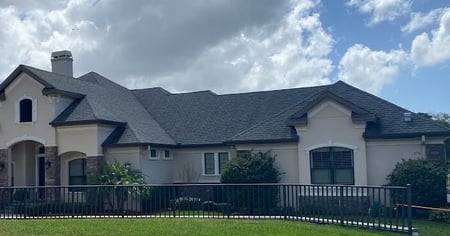
Composite roofing refers to a type of roofing material made from a combination of various elements rather than a single material. It typically involves a mixture of materials like asphalt, fiberglass, recycled plastics, and other materials bound together to create durable shingles or tiles.
These materials are designed to mimic the appearance of natural materials like wood shakes, slate, or clay tiles while offering benefits such as durability, fire resistance, and often a more affordable cost compared to their natural counterparts. Composite roofing is popular due to its versatility, weather resistance, and relatively low maintenance requirements.
What Are the Different Types of Composite Roofing?
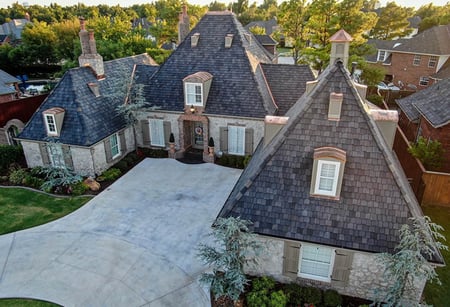
When it comes to composite roofing, you have choices! Composite roofing comes in various forms, each offering distinct advantages in terms of appearance, durability, and cost. Here are some common types:
.png?width=1200&height=200&name=Recommended%20Reading%20(53).png)
Asphalt shingles: These are the most popular type of composite roofing. They consist of a fiberglass or organic mat saturated with asphalt and coated with mineral granules. They come in various styles, including three-tab, architectural, and designer shingles. They are cost-effective, durable, and relatively easy to install.
Rubber roofing shingles: Made from recycled tires or other rubber materials, these shingles are eco-friendly and durable. They are resistant to weather extremes, making them a good choice for harsh climates. Rubber shingles can resemble slate or wood shakes.
Composite slate tiles: These tiles mimic the appearance of natural slate but are lighter in weight and more affordable. They're typically made from a blend of plastic/polymer materials and rubber compounds, offering similar aesthetics to natural slate without the same weight and fragility.
Composite shake shingles: Mimicking the look of cedar shakes, composite shake shingles are made from a mix of materials such as plastic, rubber, or other recycled materials. They provide the appearance of wood without the susceptibility to rot, insects, or fire.
Synthetic wood shingles: These shingles replicate the appearance of natural wood but are made from a composite material like engineered polymers, recycled plastics, or cellulose fibers. They offer the aesthetic appeal of wood shakes but with improved durability and resistance to weathering.
Fiber cement roofing: While not entirely composite, fiber cement roofing combines cement, sand, and cellulose fibers to create durable and fire-resistant roofing material. It's available in various styles and can resemble wood shakes, slate, or traditional shingles.
Each type of composite roofing has its own set of advantages and considerations, so it's essential to consider factors like cost, durability, aesthetics, and suitability for your specific climate when choosing the right roofing material for your home.
Which Composite Roof Is Right for My Home?
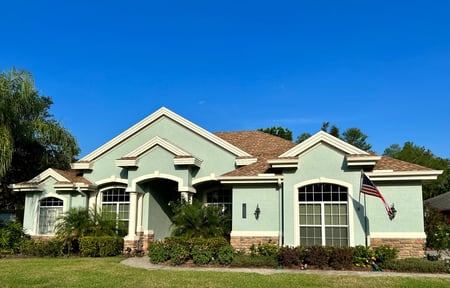
Choosing the right composite roof for your home involves considering several factors:
.png?width=1200&height=200&name=Recommended%20Reading%20(54).png)
Aesthetic preference: Think about the look you want for your home. Do you prefer the appearance of slate, wood shakes, or traditional shingles? Different composite roofing materials mimic various natural materials, so choose one that complements your home's style.
Durability and longevity: Consider the weather conditions in your area. Some composite materials are more resistant to harsh weather, such as extreme heat, cold, or storms. Look for options that offer good durability against elements prevalent in your region.
Cost: Determine your budget. While some composite roofs might be more expensive upfront, they could save money in the long run due to their durability and low maintenance requirements.
Weight and structural considerations: Some composite roofs are heavier than others. Ensure that your home's structure can support the weight of the chosen material.
Environmental impact: If environmental friendliness is a priority, look for composite materials with high recycled content or those that are recyclable at the end of their lifespan.
Local regulations and restrictions: Check if there are any local regulations or neighborhood restrictions on roofing materials. Some areas have specific guidelines about the type of roofing allowed.
Warranty and maintenance: Review the warranties offered with different materials and understand the maintenance requirements. Some materials might require more upkeep than others.
Consulting with roofing professionals or contractors can be incredibly helpful in making this decision. They can provide insights based on your home's specific needs, local climate, and structural considerations. Additionally, visiting showrooms or seeing samples of different composite roofing materials can give you a better idea of their appearance and texture before making a final decision.
Is Composite Roofing Environmentally Friendly?
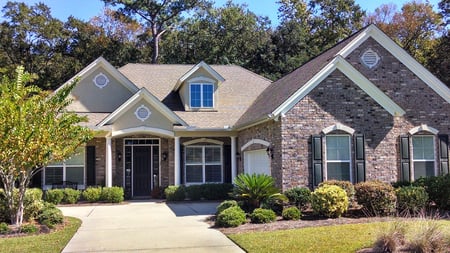
Composite roofing materials often incorporate recycled components, like recycled plastics, rubber, or reclaimed materials, which can contribute to their eco-friendliness. Additionally, some composite roofs are recyclable at the end of their lifespan, reducing the environmental impact compared to non-recyclable roofing materials. The eco-friendliness of composite roofing can vary based on several factors:
Recycled content: Look for products with higher recycled content, as they help reduce waste and demand for new raw materials.
Longevity and durability: Composite roofs are often durable and long-lasting, reducing the need for frequent replacements and minimizing the waste generated.
Energy efficiency: Some composite materials offer insulation properties that can improve a home's energy efficiency, reducing the overall environmental impact.
Manufacturing process: Consider the energy and resources required to manufacture these materials. Some composite roofing materials might have a more energy-intensive production process than others.
Disposal and recycling: The ability to recycle or dispose of the roofing material responsibly at the end of its life cycle contributes to its eco-friendliness.
Revolutionize Your Home With Composite Roofing
As you now know, composite roofing presents a versatile and durable option for homeowners seeking a blend of aesthetics, durability, and eco-friendliness in their roofing materials. Comprising a mix of various elements such as recycled plastics, rubber, asphalt, and other materials, composite roofs offer an array of choices mimicking the appearance of natural materials like slate, wood shakes, or traditional shingles.
Their durability, resistance to weather elements, and relatively low maintenance needs make them an attractive choice for many. However, the selection process should consider factors such as aesthetic preferences, local climate conditions, structural suitability, budget, and environmental impact.
Consulting with professionals and weighing these considerations will ensure a well-informed decision, leading to a roof that not only enhances the home's appearance but also provides long-lasting protection. If you’re interested in composite roofing and would like to know more about your options, be sure to hit the “Schedule an Inspection” button down below!
My name is Cassie, and I’m the Content Manager here at RoofCrafters. I was born and raised in Chicago, Illinois, and made my way out to Florida post-college graduation. I’m incredibly passionate about writing and creating valuable content that helps others with the collaboration of my marketing team. When I’m not working, I enjoy shopping (a little too much), spending time at the beach, and reading!



